LD Capital: The logic of the Palestinian-Israeli conflict and its current impact on global financial markets
Original author: Alfred, LD Capital

In the early morning of October 7, 2023, the armed organization headed by Hamas (*Islamic Resistance Movement) launched the operation code-named Aqsa Flood. In a short period of time, more than 5,000 rockets were fired into Israel, and thousands of Militants entered Israel from the Gaza area and clashed with the Israeli army in a three-dimensional combat method. On that day, Israeli Prime Minister Netanyahu issued a public statement on the incident, saying that his country was in a state of war and began to fight back. The conflict has lasted for a week and has a tendency to further intensify, causing more than 4,700 deaths. This conflict has changed world politics and The economic focus has returned to the Middle East, and this article will analyze the logic of the conflict and its impact on financial markets.
1. The formation of centuries-old grievances between Palestine and Israel
The history of Palestine and Israel in what is now Palestine can be traced back two to three thousand years ago, and the grievances and conflicts really took shape after the Balfour Declaration in 1917 and the two-state solution proposed by the United Nations in 1947. The conflict has now lasted for about a year. Over the past century, five Middle East wars and countless conflicts have occurred. The root cause of the conflict stems from the two parties firmly different views on land ownership and the historical ambiguity left by Britain and the United States and other countries in their past management of the Middle East.
From the perspective of Israeli Jews, todays Palestinian area is the promised land given to the Jews by God as recorded in their religious book Tanach. Before 1600 BC, the Israelites lived in the Canaan region (*now Palestine). Later, a famine occurred in Canaan, and the Israelites took refuge in Egypt, where they were later beaten into slavery by the Egyptians. Around 1250 BC, Moses led the Israelites back to Canaan to rebuild their homeland, a period of history known as the Exodus. Around 1000 BC, the 12 tribes of Israel completed the unification and established the Kingdom of Israel. Later, the northern part of Israel was conquered by Assyria, and the southern Kingdom of Judah survived, and was later called the Jews. Subsequently, the Jews were conquered and ruled by the ancient Babylonians and the ancient Romans. Around AD 70, the Jews went to war with Rome, which resulted in a disastrous defeat. All the Jews were expelled. Since then, the Jews have left Palestine and began wandering for two thousand years. A small number of people stayed in nearby areas in the Middle East, and most of them migrated to Europe. Live everywhere. But the Jews have always believed that Palestine is the place where their ancestors lived and the promised land given to them by God.
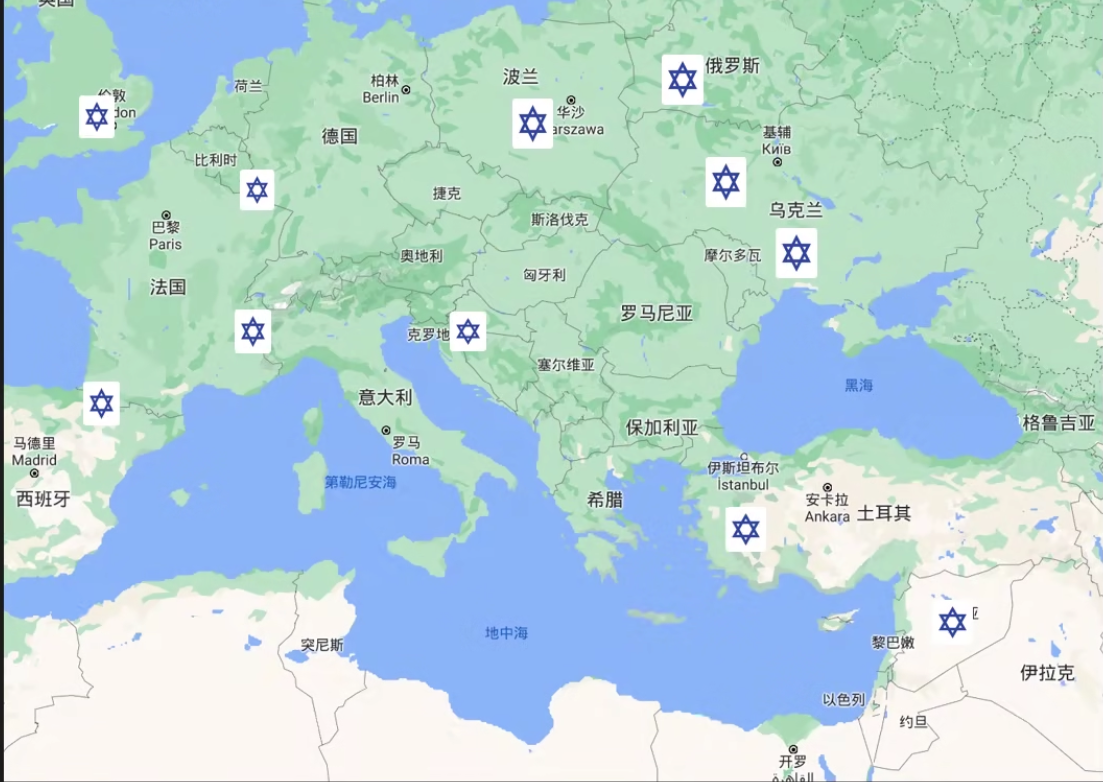
From the perspective of Palestinian Arabs, around 337 AD, when Palestine was still ruled by the ancient Romans, some Arabs began to live in Palestine. After 630 AD, Islam began to originate with the birth of its religious book, the Quran, and over the next hundred years Islam expanded rapidly. The Middle East, including Palestine, has begun to become a region where Arabs are the main ethnic group and Islam is the mainstream religion. Palestine was subsequently ruled by the Turks, Franks, Egyptian Mamluks, Mongols, and the Ottoman Turkish Empire. However, most of the later rulers also began to believe in Islam, and this area maintained the status of Islamic Muslims as the majority. Before 1882, the Jewish population in Palestine accounted for only 8% and was a minority.
Around 1800, Zionism, also known as Zionism, was proposed among Jews, calling on Jews from all over the world to return to Palestine to build their homeland. Zionism did not receive a large-scale response when it was first proposed, because Jews also have their own lives in various places and the speed of information dissemination is slow, making it difficult to form a consensus. However, in 1881, a large number of anti-Semitic riots occurred in southern Russia, which promoted the spread of Zionism and brought about a two-stage wave of Jewish immigration. In 1914, the proportion of Jews in Palestine rose to 13.6%. There were conflicts between the newly arrived Jews and the existing Arabs. In 1915, in order to overthrow the rule of the Ottoman Empire in the Middle East, MacMahon of the British government reached an agreement on military cooperation with Hussein, who was eager to establish an independent Arab state, and gave support to the ownership of Palestine, but subsequently the British A different agreement was reached with France, leaving a foreshadowing of conflict. In 1917, the British government issued the Balfour Declaration to openly support the establishment of a Jewish homeland in Palestine due to lobbying and Middle Eastern interests. In 1939, the proportion of Jews in the area exceeded 30%. Then the Second World War broke out, and Nazi Germany began to carry out genocide against the Jews. After the end of World War II, a large number of Jews went to the United States and Palestine, and promoted the establishment of an independent country. In 1947, the United Nations proposed The two-state solution divides Palestine into two parts, one is the Jewish-dominated state of Israel, and the other is the Arab-dominated Palestinian state. Jerusalem is an international public area under the jurisdiction of the United Nations.
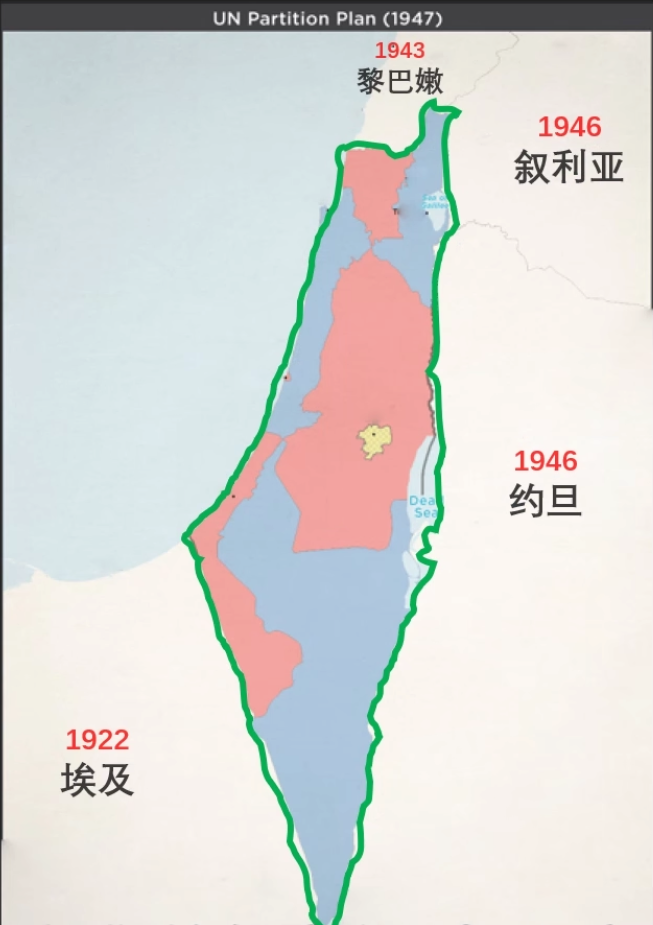
The Jews declared the establishment of the state of Israel in 1948, but Arab countries believe that Palestine has been an Arab-dominated territory since the 7th century AD. The United Kingdom has made territorial commitments, but subsequent international agreements are different from those before. There was strong dissatisfaction with the establishment of a Jewish state in the region. On the second day after the founding of Israel, neighboring Arab countries gathered to attack Israel. The first Middle East war broke out, and Israel won. However, local wars, major and minor conflicts and the issue of the ownership of the Palestinian area by both sides continue to this day. .
2. Overview and deduction of this Palestinian-Israeli conflict
1. The underlying logic of the Palestinian-Israeli conflict
After the Fifth Middle East War, Palestine and Israel signed the first peace agreement, the Oslo Accords, in 1993, allowing Palestine to establish a provisional autonomous authority and conduct subsequent regional transfer negotiations and negotiations with Israel. In 1995, the Palestine Liberation Organization Leader Arafat and Israeli leader Rabin signed the Oslo 2 Accords, for which they both won the Nobel Peace Prize. However, the agreement did not advance smoothly. Many forces within both parties were dissatisfied with the specific content of the agreement. After the signing of Agreement No. 2, Rabin was killed by Israeli right-wingers. The PLO was mainly divided into two major factions. Tah and Hamas, which are further fighting for their rights through struggle. The subsequent Oslo peace process has not been effectively promoted. After 2000, another large-scale conflict broke out in Palestine, and bilateral relations deteriorated again. Later, the Palestinian Gaza area was controlled by Hamas, and the West Bank area was controlled by Fatah.
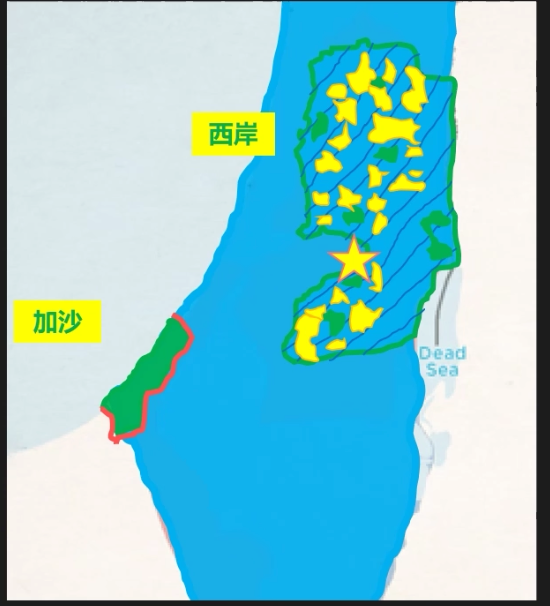
The current Prime Minister of Israel is Netanyahu of the right-wing Likud group. He has served as the Prime Minister of Israel three times from 1996 to 1999, 2009 to 2021 and 2022 to the present. He has been in office for more than 15 years, starting in 1948. The longest-serving Prime Minister of Israel since its founding. On December 29, 2022, Netanyahu became prime minister for a third term and formed the most right-wing cabinet in Israel’s history. Netanyahus right wing manifests itself both internally and externally. Externally, Netanyahu continues to compress Palestines living space through policies and practical actions, and the hostility between Palestine and some Arab countries is becoming increasingly fierce. Internally, on the basis of the increasingly fierce confrontation between secular Israelis and ultra-Orthodox in Israel, the Netanyahu government insisted on promoting a judicial reform in early 2023 that would weaken the Supreme Court and strengthen the power of the prime minister. The Supreme Court is Israel’s only An institution capable of acting as a check on the ruling party, which stoked fears among the left and secular Israelis as well as dissatisfaction with the United States, which had just shifted its global strategy away from the Middle East, and triggered 29 consecutive weeks of strikes and demonstrations that Netanyahu has continued this year. Faced with internal and external pressure to govern.
On the Palestinian Hamas side, there may be two reasons for initiating this Palestinian-Israeli conflict. The first is the long-term resentment based on the accumulation of living space and resources. Currently, the Gaza area is called the largest open-air prison in the world, with 3.65 million people. There are 3 million people living on a square kilometer of land. The border with Israel is surrounded by a border wall and they only have limited access to water, electricity and other resources. They cannot develop beyond maintaining basic survival. The Palestinian areas in the West Bank continue to be encroached on by Israeli settlements. Constrained by various policies, it is difficult to achieve normal economic and industrial development. Palestine is essentially entering a slow death, while Gaza is in dire straits and has become a tinderbox. Secondly, Hamas is able to continue its confrontation in the small area of Gaza because it also relies on the support of some Arab interest groups. The motivation for launching conflicts will also take into account the instructions and actual support of the interested parties behind it. Since September, there has been news that the United States and Saudi Arabia are advancing the U.S.-Saudi mutual defense mechanism. In this agreement, Saudi Arabia needs to support Israel’s legal status to normalize relations and increase oil production in 2024 according to U.S. needs in exchange for U.S. military support. Obstacles to such an agreement through conflict may be a potential motivation for conflict to erupt in the near future.
2. Current conflict development situation
Hamas has shown greater preparation and organizational capabilities in this conflict than before. It should be fully prepared for the escalation and continuation of the conflict. It has also recently received support from many Arab countries and organizations. In addition to Iran, Lebanon, Syria, Iraq, Egypt and other countries, the Saudi Crown Prince also told the Palestinian President that the Kingdom will continue to support Palestine, and some countries have started war to supply supplies to the Gaza region. The support of resistance organizations in various regions is more direct and radical. Quasim, the second-largest figure in Lebanons Hezbollah, said that the organization is always paying attention to the progress of the situation between Palestine and Israel and is ready. When the time comes, it will contribute to the fight against Israel, even if other countries tell It should not intervene, but this will not have any effect; Iraqs Badr Organization, Fatah Alliance, Hezbollah Brigades, Yemens Houthi armed forces, etc. expressed, Warning that if the United States directly intervenes in the Palestinian-Israeli conflict, it will It will turn into a regional war.
Israels ruling party has shown an extreme right-wing attitude and has the potential to eliminate Hamas. The Israeli Knesset has approved Netanyahus proposal to form an emergency interim government and activated the declaration of war or major military action clause in the Basic Law. in order to give power to the emergency small cabinet, which includes Netanyahu, Defense Minister Yoyav Gallant and Benny Gantz; Netanya recently stated that Israel will crush and destroy Kazakhstan Mas, every Hamas member will be a dead man with a strong attitude. At the same time, Israel has received widespread support from European and American countries and their important media. The National Security Council stated that the United States can support Ukraine and Israel at the same time, and began to provide Israel with Military supplies, the USS Ford aircraft carrier has arrived in the eastern Mediterranean, and a second aircraft carrier is also on its way to provide deterrence support. The Secretary of State and the Minister of Defense have arrived in Israel to meet with Netanyahu; the United Kingdom announced that it will deploy reconnaissance to the Eastern Mediterranean close to Israel aircraft and two Royal Navy ships to support Israel.
The scale of the current conflict is large and there is a risk of further spillover. The death toll on both sides should be the highest in recent years. Israel also began to have actual exchanges of fire with Lebanons Hezbollah in the north, and Syria in the northeast, and carried out air strikes on Syrias Aleppo and Damascus international airports. Israel has recently cut off the water and power supply in Gaza in order to completely siege it. It has summoned more than 400,000 reservists. Israeli armored vehicles and ground troops have been assembled at the Gaza border and are ready to enter the Gaza Strip. Netanyahu is asking Putin to stated in the call that Israel will not stop its operations in the Gaza Strip until Hamas is destroyed. Since the bombing of a hospital in Gaza on October 17, the conflict has further intensified.
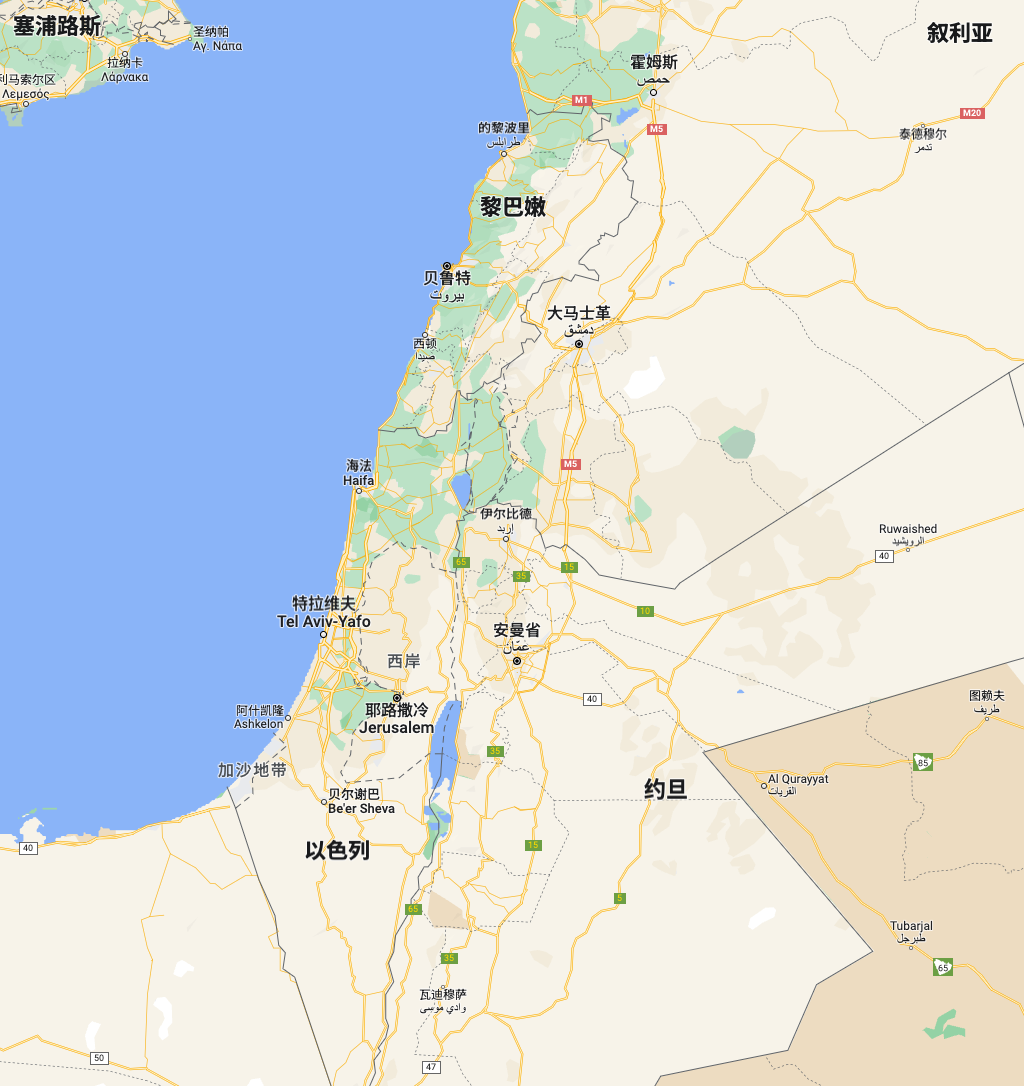
3. Deduction of future conflicts
There are three possibilities for the future direction of the conflict:
The first is that both parties are willing to negotiate for peace after weeks of conflict or that Hamas is quickly defeated, and a new peace plan will be explored in the future under the initiative of major powers.On October 10, senior Hamas official Moussa Abu Marzouk accepted a phone interview with Al Jazeera. When asked whether Hamas was willing to discuss a possible ceasefire, Marzouk said that Hamas was not interested in such things ( *ceasefire discussions)” and “open to all political dialogue.” If Hamass goal in this conflict is to hinder the recent relevant agreements promoted by the United States and Saudi Arabia, it will be motivated to engage in peace talks. Israel may indirectly accept peace talks through the mediation of various countries and explore possible implementation of peace plans when it causes greater casualty advantages to Hamas. . Or Hamas will be defeated quickly and effectively, and the Palestinian people will face an Israeli-led ceasefire plan.
In the second type, the conflict between the two sides turns into a proxy war and lasts for several months.The conflict between the two sides continues to escalate, and when various Arab regional organizations intervene in armed support to support Hamas to balance the situation that is one-sided to Israel, the major countries can maintain their respective interests in the area and refrain from direct consequences. This has evolved into providing resource support to various organizations, and the dynamic trend Peace talks may escalate further.
The third type is when the conflict between the two sides goes to extremes and evolves into a regional war.When the second scenario occurs, it will also increase the risk of further evolution of the conflict. The more forces and resources involved, the easier it is for information misjudgment to occur, leading one party to make radical decisions. If any major country ends up participating in the war, it will Extremely escalated into a regional war.
Due to the huge imbalance in armed forces and negotiation resources between Hamas and Israel, it is currently believed that the key to whether the conflict escalates lies with Israel. If after the conflict lasts for a period of time and Israel takes the upper hand, it can relax the living space of the Palestinian people and is even willing to accept the 1947 two-state solution advocated by the United Nations and mainstream countries, the Palestinian-Israeli issue can be better solved because of the two-state solution. The implementation of Palestine will greatly improve the status quo, while Israel will fundamentally solve regional problems through concessions. However, Israel is currently governed by a far-right party. The Netanyahu government needs to establish a common external enemy and take longer to solve domestic problems, and its current statements and actions are extremely radical. If Israel attacks Hamas and A devastating blow will be carried out in Gaza, and the conflict will escalate to extremes. At present, I personally think that the second possibility is more likely.
3. Historical review of the impact of war on financial markets
(1) Russia-Ukraine conflict
In the month after the Russia-Ukraine conflict broke out in February 2022, the prices of gold, crude oil, and Bitcoin rose to varying degrees. The price of Brent crude oil rose to a maximum of US$137, the price of gold rose to a maximum of US$2,068, and the price of Bitcoin reached a maximum of US$137. 47,888 US dollars, the Russian stock index price dropped significantly, and the ruble exchange rate dropped significantly due to sanctions such as Russia being kicked out of the SWIFT system and foreign exchange reserves being frozen by Western countries. On March 15, the Federal Reserve began to raise interest rates, and the price of Bitcoin began to continue to fall, showing a high sensitivity to interest rates and liquidity. Crude oil and gold prices have remained at high levels for several months. The ruble exchange rate was affected by Russias ruble settlement order, requiring unfriendly countries and regions that trade natural gas with Russia to open ruble accounts in Russian banks and use this to trade natural gas. settlement, otherwise Russia will regard it as a breach of contract, causing the ruble exchange rate to achieve a V-shaped rebound, rising significantly after the sharp fall.
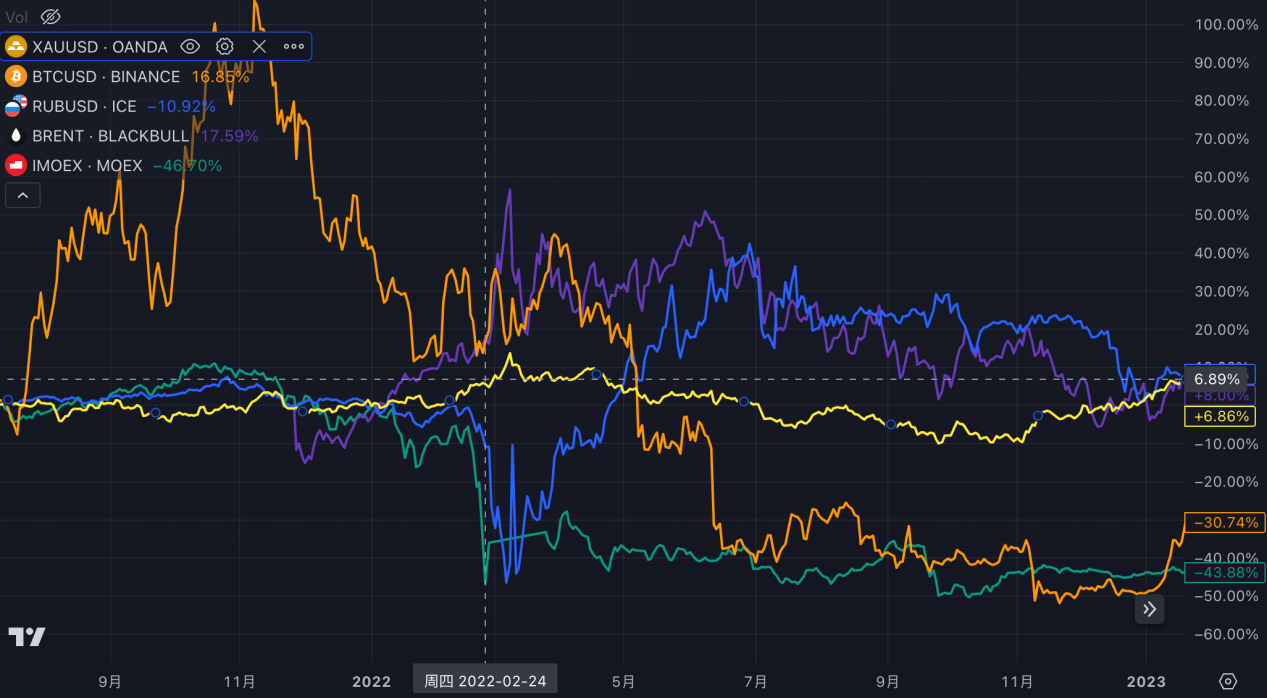
(2) Iraq War
In October 2002, the U.S. Congress gave then-President George W. Bush the authority to launch any military attack on Iraq. Bush issued an ultimatum to Iraqi President Saddam Hussein, financial markets captured the ferment of the conflict, with crude oil and gold markets rising first and then falling. On March 20, 2003, the United States, together with the United Kingdom, Australia and Poland, launched a bombing campaign against Iraq. The Iraq War officially began. This war, which lasted for nearly 10 years, led to successive conflicts in the Middle East. In the subsequent period, crude oil It continued to rise until the 2008 financial crisis.

(3) The Fourth Middle East War
In the six months following the outbreak of the Fourth Middle East War in 1973, crude oil and gold prices rose significantly. The war prompted Middle East oil-producing countries, led by Saudi Arabia, to impose an oil embargo as a protest against U.S. support for Israel. Over the next three months, oil prices nearly quadrupled and remained high even after the conflict resolved. The U.S. stock market price, far away from the war, has a certain downward impact, but the overall negative impact is limited.
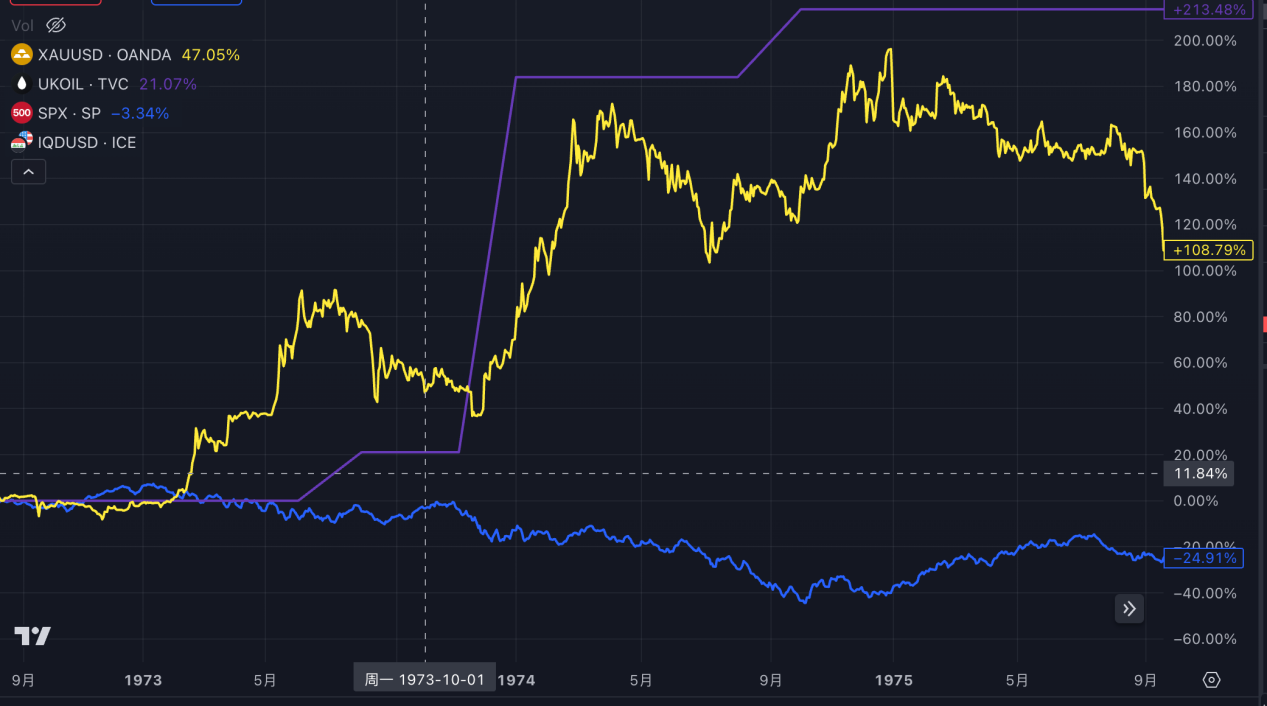
4. Fluctuations in the international crude oil market during this conflict
As the Middle East accounts for more than one-fifth of the oil supply, the impact of the geopolitical risks of the Palestinian-Israeli conflict on oil prices is the most noteworthy. Since the Palestinian area is not a traditional oil-producing area, if the regional conflict does not escalate, the impact on oil prices will not be If the inter-regional conflict expands to OPEC members, it will push up oil prices significantly.
1. Crude oil market conditions before the Palestinian-Israeli conflict
On September 5, 2023, Saudi Arabia and Russia extended the previous crude oil production reduction plan. Saudi Arabia extended the voluntary additional production reduction of 1 million barrels per day by 3 months to the fourth quarter of 23. Russia also decided to implement the voluntary additional production reduction in September. Oil export cuts of 300,000 barrels per day were extended until the end of the year.
According to IEA data, OPEC+ production reductions continue to be implemented. In September 2023, the total crude oil production of the OPEC+ production reduction agreement countries was 36.38 million barrels per day, lower than the target of 36.92 million barrels per day. Non-OPEC countries supplied 14.94 million bpd in September, below the target of 13.54 million bpd. It raised its demand growth forecast for 2023 to 2.3 million bpd from 2.2 million bpd.
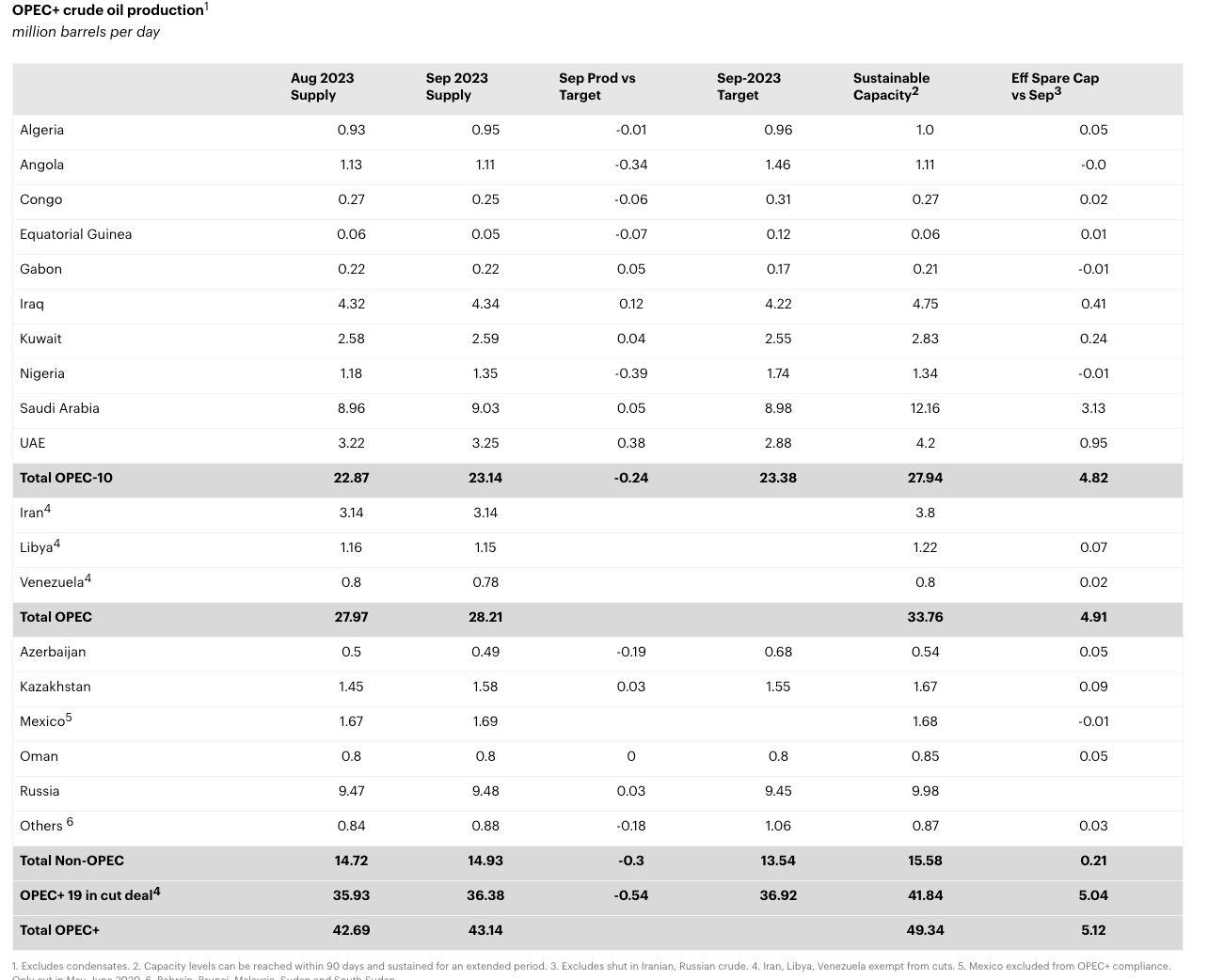
Overall, global crude oil supply in September 2023 was 101.34 million barrels per day, and global crude oil demand was 101.63 million barrels per day. The supply and demand pattern of the global crude oil market in September was that supply was less than demand. Judging from the forecast value for the fourth quarter of 2023, global oil supply is expected to be 101.56 million barrels per day, and global oil demand is expected to be 101.62 million barrels per day. The supply and demand pattern in the fourth quarter is expected to be less than demand. Shortfalls in the current supply situation are likely to intensify as the Palestinian-Israeli conflict expands, pushing up oil prices.
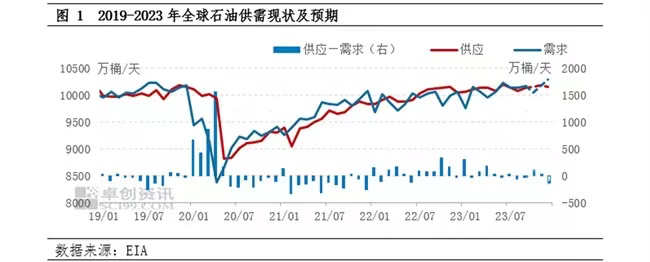
2. Key variables currently affecting crude oil prices
The U.S.-Saudi mutual defense agreement is on hold. Previously, Saudi Arabia expressed its intention to produce oil to the White House, saying that Saudi Arabia was willing to increase oil production in order to promote the US-Saudi Mutual Defense Agreement. Saudi Arabia said oil production actions would depend on market conditions. Saudi Arabia is willing to take action in early 2024 if oil prices are high. Saudi and U.S. officials said the move was aimed at normalizing relations between Saudi Arabia and Israel. Under the agreement, Saudi Arabia will recognize Israel and in return, the United States and Saudi Arabia will sign a mutual defense agreement. For the United States, the move would help ease high inflation by holding down oil prices and aid Bidens re-election campaign. However, the occurrence of the Palestinian-Israeli conflict makes it impossible for Saudi Arabia to normalize relations with Israel, and the US-Saudi joint agreement will be temporarily shelved.
Uncertainty over Iranian crude oil production. Since the end of 2022, contrary to the production cuts by Saudi Arabia and Russia, Irans crude oil production has continued to increase this year. According to previous predictions, Iran is likely to become the worlds second largest source of crude oil after the United States in 2023. However, with the outbreak of the Palestinian-Israeli conflict, Irans This incident must firmly support Palestine, and may face subsequent oil export sanctions from the United States.
The situation escalates and there may be crude oil production cuts in the Gulf countries. The Gulf oil-producing countries are mainly Arab countries, and most of them support Palestine. If the conflict escalates to the third situation and the Gulf countries are involved in the war, it will inevitably push up the global crude oil price to more than 100 US dollars per barrel. At present, the probability of this event is not high.
3. Current oil price situation
On the day the conflict broke out on 10.7, Brent crude oil and WTI crude oil opened with a long jump. In the next two days, the market sentiment was more optimistic and believed that the incident would have little impact on other oil-producing countries. Oil prices fell back. However, on 10.13, as the conflict developed further, As the trend heated up, the market repriced, and oil prices rose significantly, recovering from the price decline in early October. Currently, the prices for the two oils are around $90 and $86 respectively.
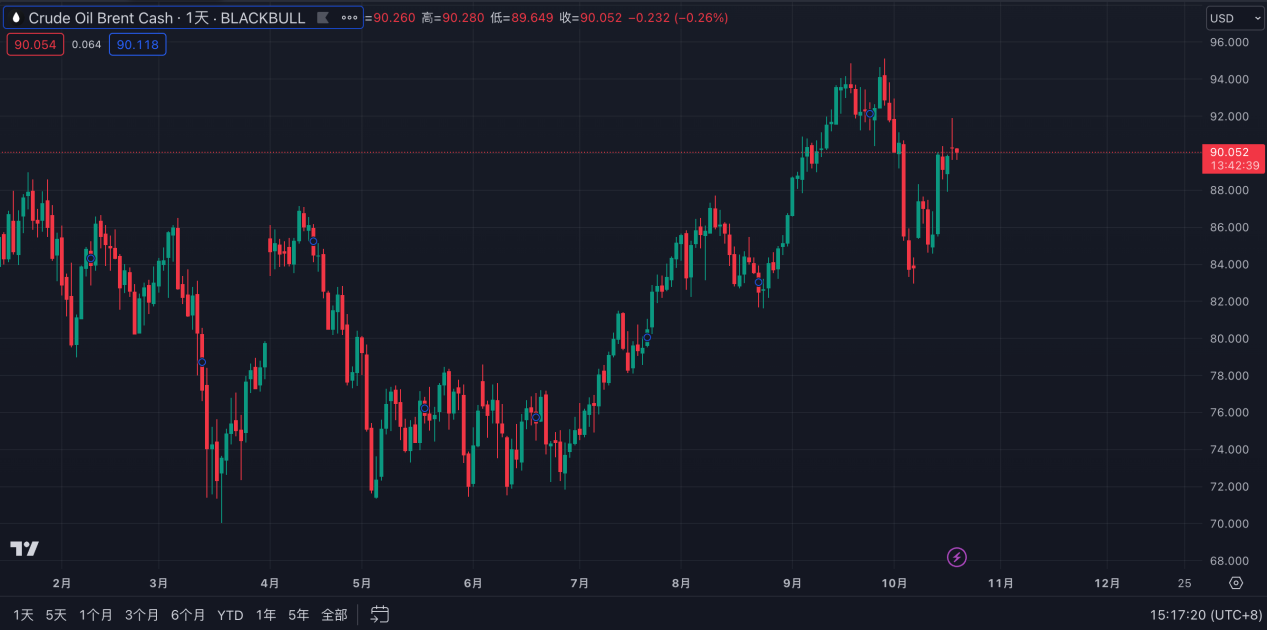
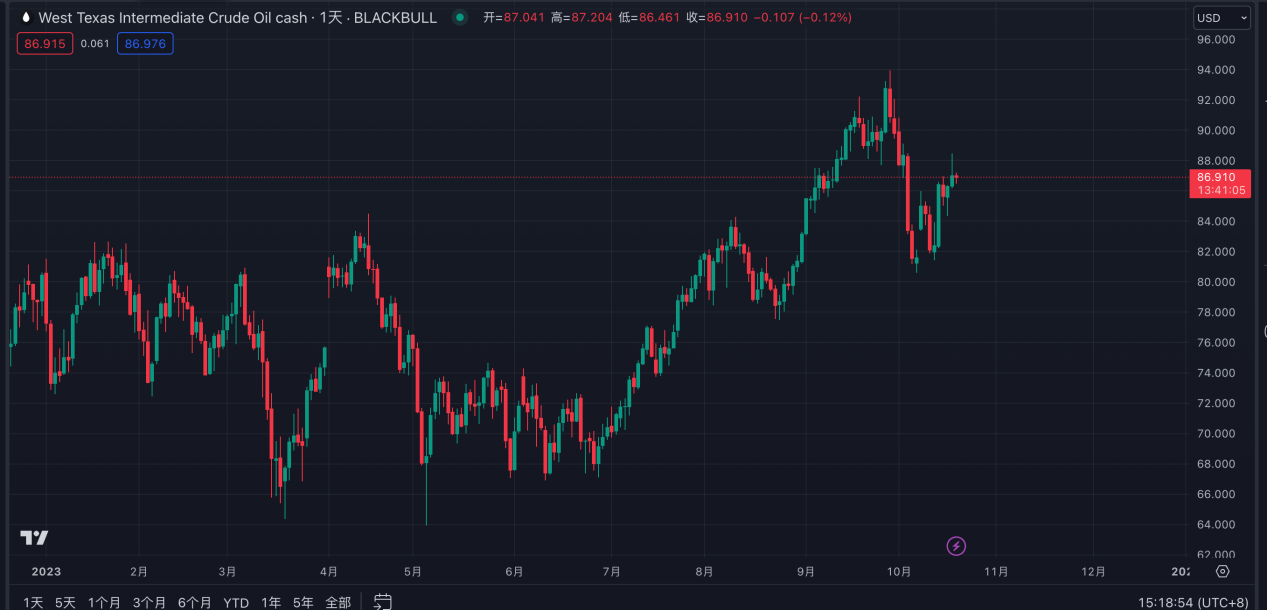
4. Impact on Israel and international financial markets
The recent Palestinian-Israeli conflict has had varying degrees of negative impact on the stock markets of Israel and the Middle East. Israels currency exchange rate has been adversely affected to a greater extent. The European and American markets have not been significantly affected as long as the conflict has not escalated further.
1. Stock market
Since the conflict broke out on October 7, Israels TA 35 index has fallen the most, down about 8% so far; Egypts EGX 30 index first fell and then rebounded higher than the price before the conflict; major stock indexes in neighboring countries such as Saudi Arabia, the United Arab Emirates, and Lebanon have declined to varying degrees. of decline. The major stock indexes of the United States and the European Union have not been significantly affected yet. The negative impact of the current conflict on the stock market is mainly in Israel and some Middle Eastern countries.
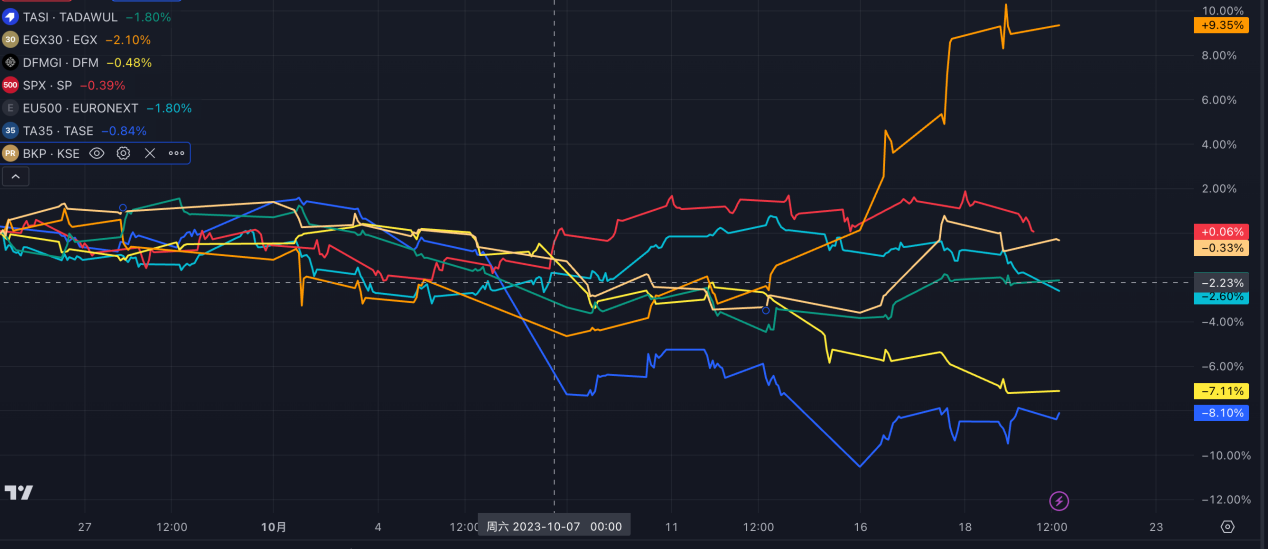
2. Exchange rate market
The main currency of Israel is the new shekel. Palestine does not yet have its own independent currency. The currencies used daily are the Israeli new shekel and the Jordanian dinar. Since the conflict, the exchange rate of the Israeli new shekel has changed significantly. fell by about 4%. The Bank of Israel has recently stated that it will not defend any specific Israeli new shekel exchange rate level.
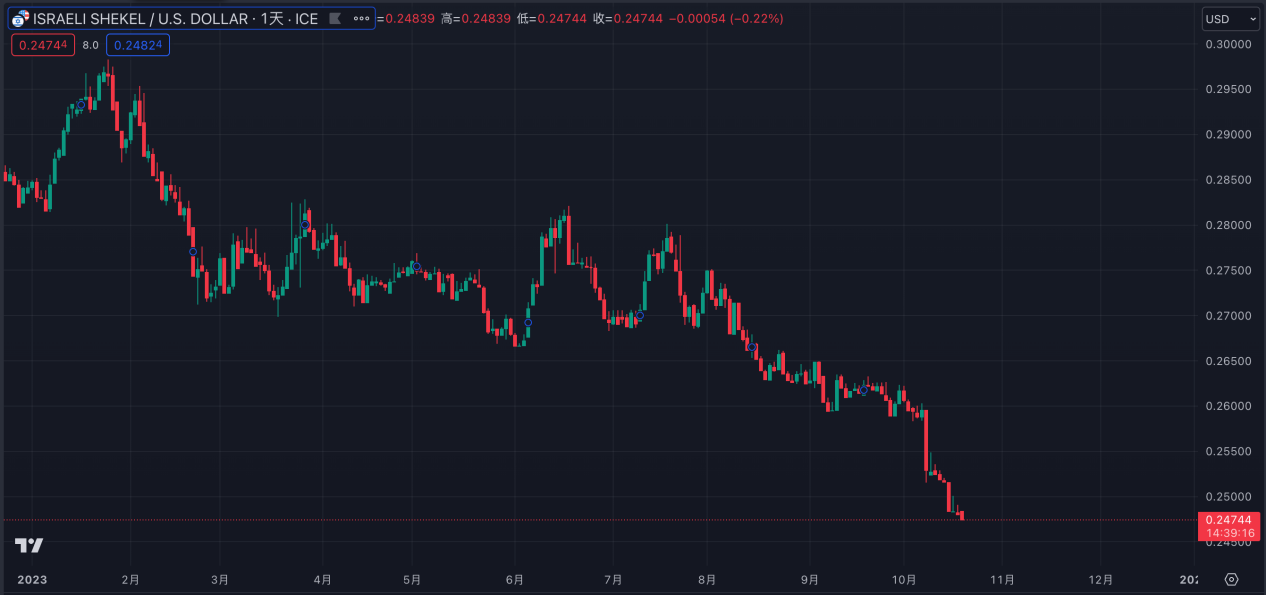
3. Others
Tel Aviv, Israel, is known as the Silicon Valley of the Middle East and the Innovation Capital because it has gathered a large number of scientific research talents and technology companies. However, after the Israeli-Palestinian conflict, many talented people were drafted into the army, and many businesses and activities of technology companies were negatively affected. Recently, Nvidia will cancel the offline annual AI Summit originally scheduled to be held in Tel Aviv from October 15th to 16th. Meeting. According to the original plan, NVIDIA will demonstrate its latest progress in the field of artificial intelligence at the AI Summit, and NVIDIA founder and CEO Jensen Huang will also give a keynote speech at the AI Summit.
In addition, SP Global Market Intelligence showed on October 12 that Israel’s 5-year credit default swap rose to 103 basis points, the highest in the past 10 years.
5. Changes in Gold, Bitcoin and Crypto Markets
1. Gold
As a traditional safe-haven asset, gold prices rise when major wars and conflicts occur. The price of gold has continued to rise since the outbreak of the Palestinian-Israeli conflict. On October 13, it closed with the largest increase in recent times, rising 3.4% in a single day. It fell slightly at the beginning of the week, with a cumulative increase of 5.5%. This was the most significant increase in prices due to this conflict. target.
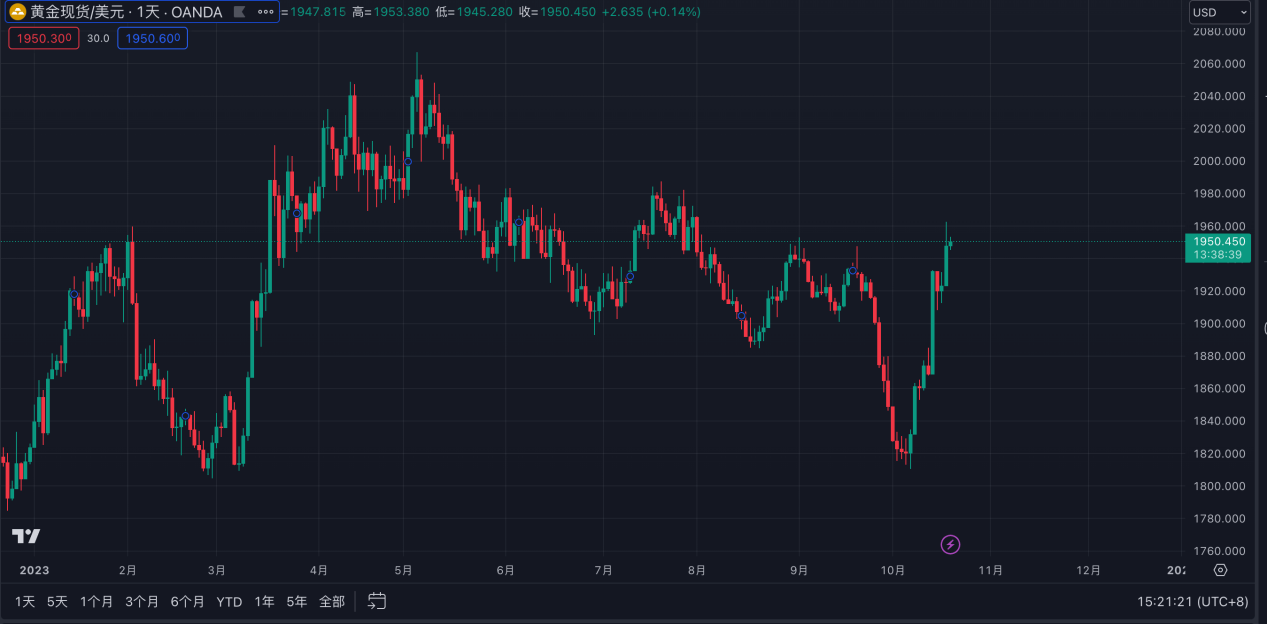
2. Crypto market
BTC was previously considered to be digital gold, which to a large extent has safe-haven properties. However, since the outbreak of the Palestinian-Israeli conflict, it has not shown a significant price increase like gold, and has even emerged from a relatively independent market that has continued to decline. Later, due to This week, the Bitcoin spot ETF experienced a sharp rise and then fell following Fake news, which reflects that BTC is more biased toward risky assets during the interest rate hike cycle.

3. Israel and Islamic Encryption Projects
Israel has an extremely high density of high-tech talents and companies, accounting for 0.1% of the global population. However, it has some of the most successful start-ups in the world and ranks seventh in the number of unicorns. This advantage is not only reflected in high-tech manufacturing and the Internet, but also in Performance in the Web3 field. Israel has leading academics such as Eli Ben Sasson, Shaffi Goldwasser, Yehuda Lindell, Aviv Zohar, Eran Tromer, and many revolutionary technologies such as MPC and ZKP deployed here. Well-known encryption projects include Starkware, Fireblocks, Kaspa, Secret Network, Bancor, SSV Network etc.
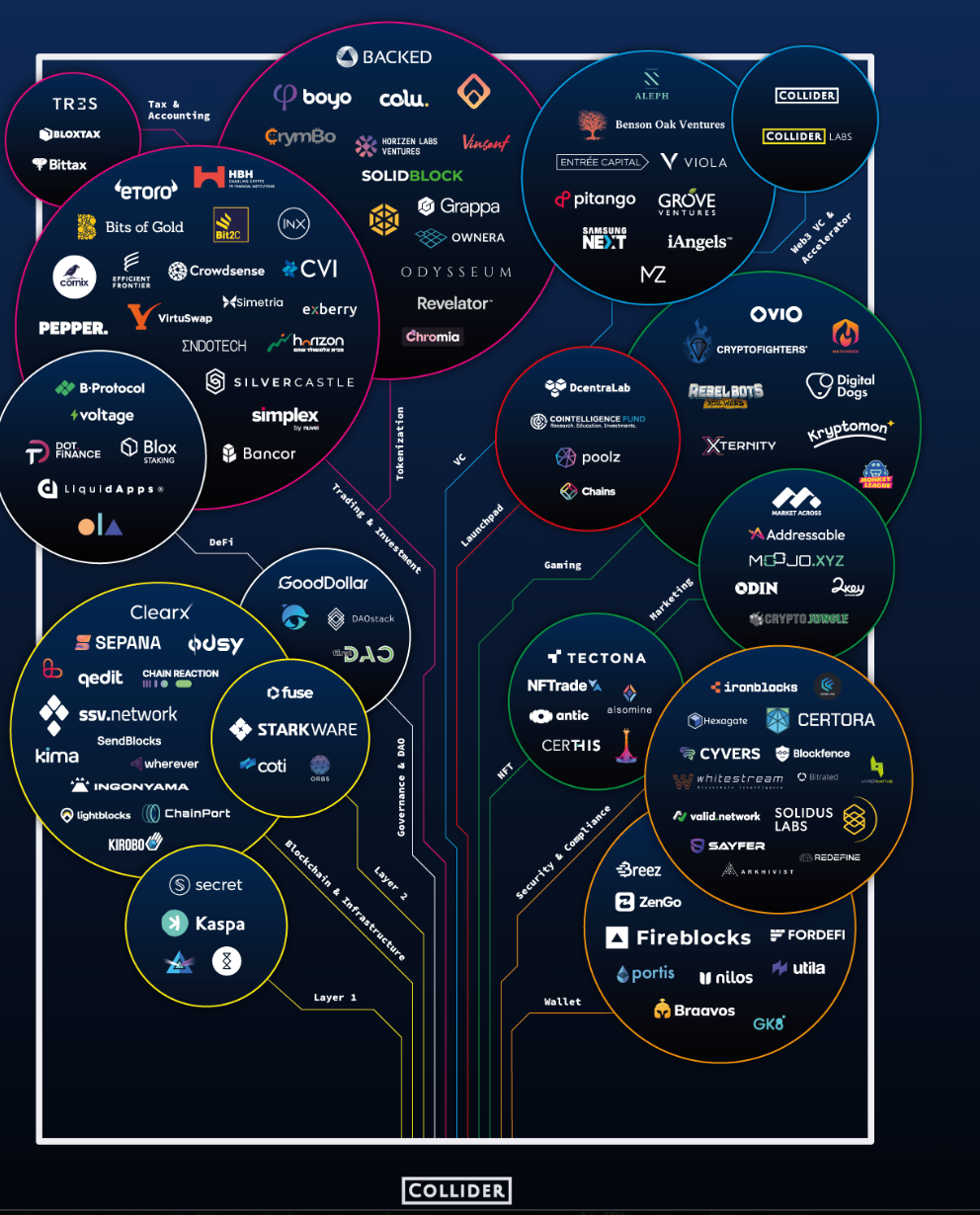
Since the outbreak of the Palestinian-Israeli conflict, some Israeli crypto projects have been negatively affected and prices have dropped. Take SSV as an example. On October 11, Alon Muroch, the Israeli founder of the Ethereum staking infrastructure SSV Network, posted on X that he had been recruited. Although the team said it is still operating normally, the price of SSV tokens has dropped significantly, and it has fallen by about 15% so far. BNT and ORBS have experienced sharp rises and falls in token prices in recent days due to significant market maker and banker behavior, while most other token projects have experienced varying degrees of decline. Due to Israel’s unique military service system, members of many technology companies and projects may become reservists and directly or indirectly participate in military operations when conflicts intensify. Encryption projects with headquarters and major teams in Israel may have further negative risks in the future.
It is worth mentioning that on October 10, Islamic Coin, an Islamic encryption project, announced the launch of the token ISLM and issued community airdrop rewards. The project claims that it is an Islamic-compliant ecosystem running on the HaqqNetwork blockchain. The mission is to bring more than 1.8 billion Muslims into digital finance without compromising their values and beliefs. The price of the token surged higher and fell after the opening, and has remained high in recent days. If the conflict continues to expand in the future and more members of the Islamic world participate, it may have a positive impact on the price of the token.
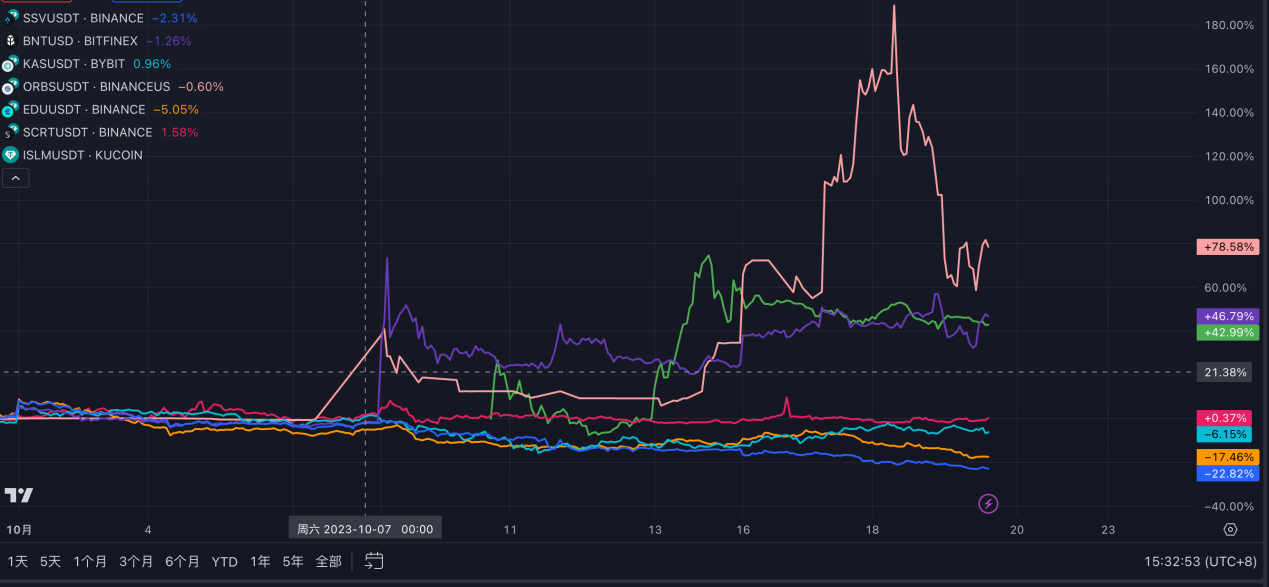
4. Hamas and crypto financing
A recent TRM Labs report showed that Hamas is the first Middle Eastern armed organization to use cryptocurrency for financing. Digital wallets that Israel believes are linked to the Palestinian Islamic Jihad received $93 million in cryptocurrency from August 2021 to June last year, according to an analysis by crypto research firm Elliptic. The BitOK research report also noted that approximately $41 million flowed into Hamas-related wallets during the same period, but it has not confirmed whether the funds were used to fund the Israeli attack. However, Ari Redbord, director of legal and government affairs at blockchain intelligence firm TRM Labs, revealed that cryptocurrencies are only a small part of the fundraising strategy of Hamas, which is largely state-sponsored. Previously, Israel stated that relevant domestic law enforcement agencies and teams have cooperated with Binance to locate and seize some account funds, and all the seized funds will flow into the Israeli treasury.
6. Summary
1. Three deductions for the development of the Palestinian-Israeli conflict. The first is that both parties are willing to negotiate for peace after weeks of conflict or that Hamas is quickly defeated, and a new peace plan will be explored in the future under the initiative of major powers. Second, the conflict between the two parties evolves into an expanded proxy war and lasts for several months. When Arab regional organizations intervene in armed support to support Hamas to balance the situation that is one-sided to Israel, and when the major powers can maintain their respective interests in the area and exercise restraint. Go straight out. The third type is when the conflict between the two sides goes to extremes and evolves into a regional war. When the second scenario occurs, the risk of further evolution of the conflict will increase. The more forces and resources involved, the easier it is for information misjudgment to occur, leading one party to make radical decisions. If any major country ends up participating in the war, it will go to extremes. escalated into a regional war.
2. The key to the escalation of the conflict lies in the attitude of the Israeli Netanyahu government towards Hamas. Although the current conflict is limited to the Palestinian area, Israel has shown far-right attitudes and behaviors. The United States, Iran and other forces have begun to make necessary preparations and support for Israels attack on the Gaza area. The United States has deployed aircraft carriers and 2,000 personnel in the Mediterranean. Lebanon and Syria have had direct border exchanges with Israel. The probability of the conflict escalating is increasing and is likely to evolve into the second or even third scenario.
3. The impact on financial markets under the three deductions. In the first case, the prices of crude oil, gold, and stock markets affected by the recent Palestinian-Israeli conflict will quickly return to pre-conflict price levels. If the armistice solution is appropriate, there will even be further benefits, pushing up the equity assets in the Middle East. price. In the second case, crude oil may be in the price range of 85-100 US dollars, and gold may be in the 1900-2000 US dollars range. Short-term trading opportunities will appear for both following conflict news. The Middle East stock market and the Israeli exchange rate remain at the current low level. Cryptocurrency The broader market may not have much impact, but BTC is currently the asset with the highest median betting rate among global assets in recent times. In the third scenario, the price of crude oil will rise significantly by more than 100 US dollars, or even 150 US dollars, gold may exceed 2,000 US dollars, the Middle East stock market and the exchange rates of participating countries will fall significantly, and the cryptocurrency market may rise due to the large inflow of Middle Eastern funds into other markets. , the token price of the crypto project with its headquarters and core team in Israel will fall.



